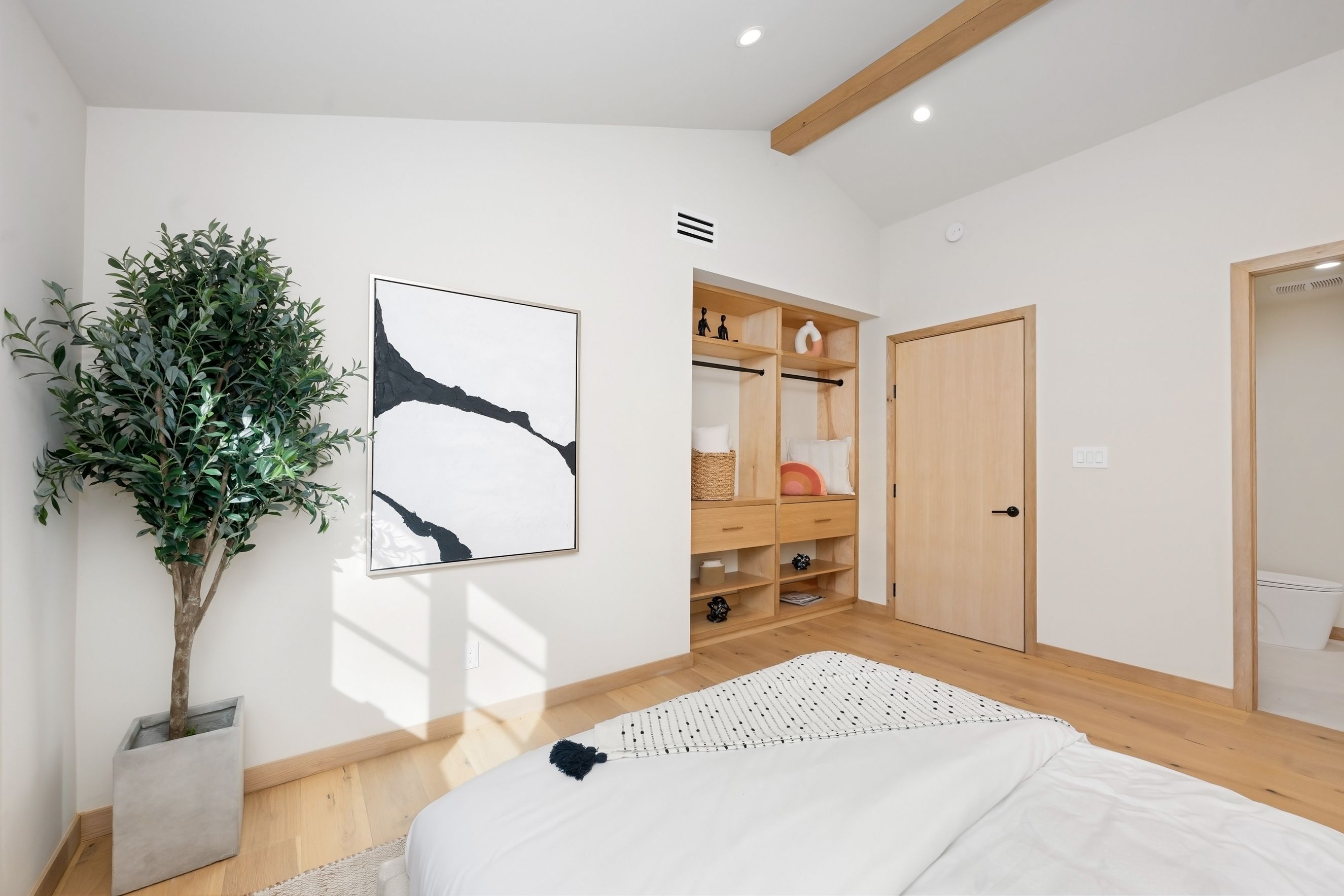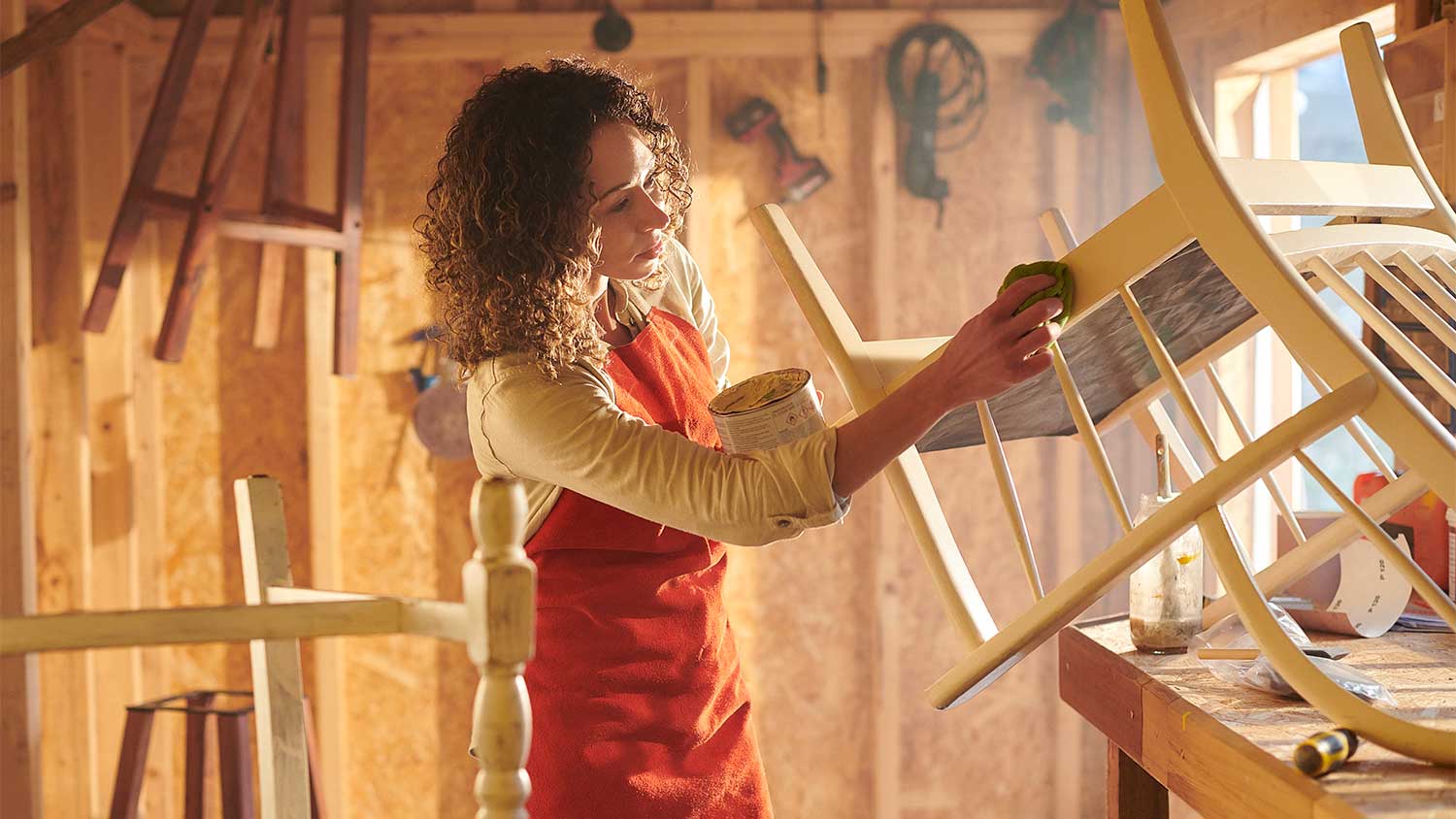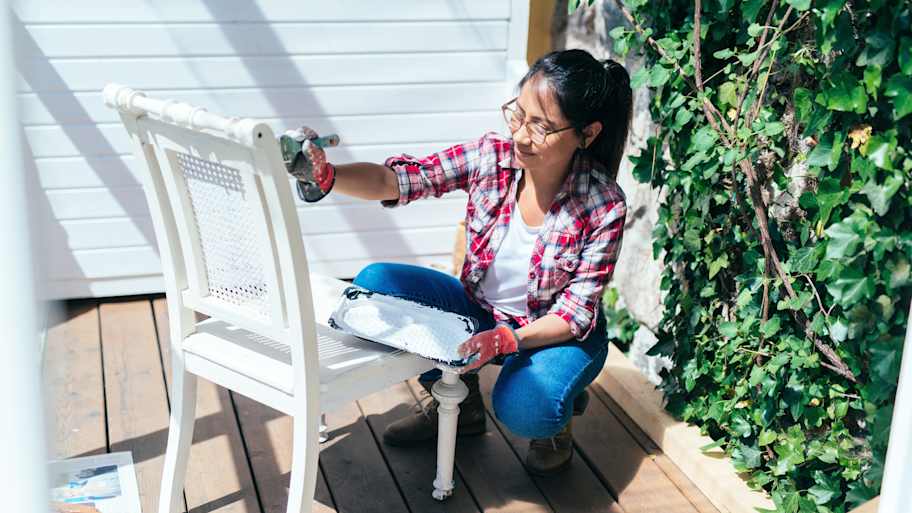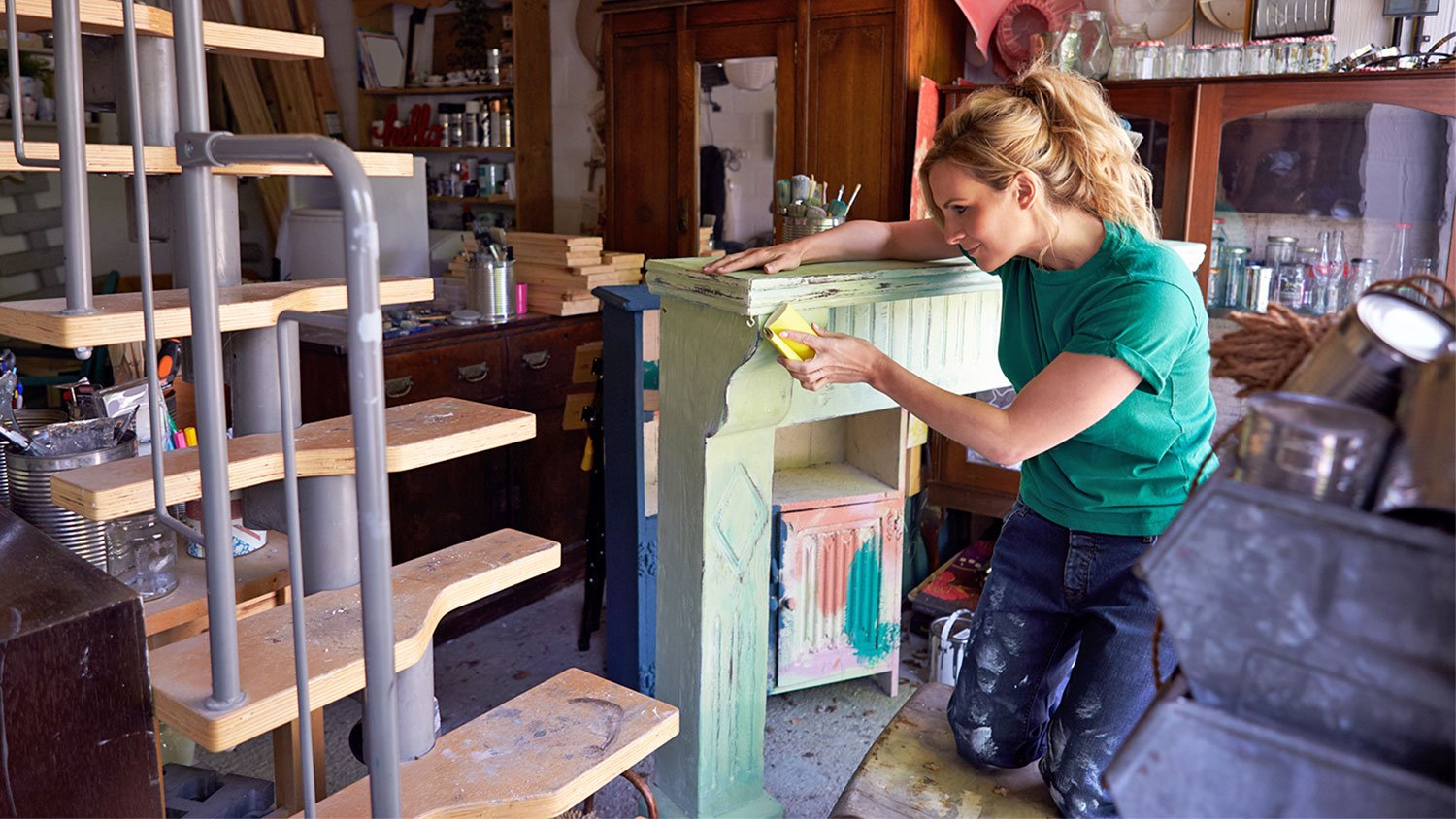
Discover the average furniture reupholstery cost, what impacts pricing, and how to save money on your next project. Get expert tips and cost breakdowns.
The average furniture refinishing cost is $630, with most projects ranging from $337 to $922, depending on furniture type, materials, and labor.


Key furniture refinishing cost factors include the furniture’s size, type, material, and the amount of prep or repair work needed.
Professional refinishing costs $40 to $100 or more per hour, gives your furniture a refreshed look, and can be more cost-effective than buying new.
Repairs add $50 to $500 to your total refinishing cost.
Refinishing a simple piece like a dining chair costs $100 to $250, while ornate, large pieces like armoires can cost up to $3,000.
This article was created using automation technology and thoroughly fact-checked and edited by an Angi Editor in accordance with our AI policy.
Furniture refinishing costs average $630, with a range from $337 to $922 depending on the piece and project scope. Costs are influenced by furniture type, size, materials, and local labor rates. Most refinishers charge per piece, though some may quote hourly or by complexity. Understanding these costs helps you budget for restoring your favorite furniture, whether it’s a cherished family heirloom or a thrifted find.
Refinishing furniture involves several variables that determine how much you’ll pay. Let’s walk through the main factors so you know exactly what impacts your final bill.
The type of furniture you refinish plays a major role in the total cost. Simple pieces like dining chairs or end tables are less expensive because they require less labor and fewer materials. Complex items—think armoires with ornate carvings or large dining tables—take more time and skill, raising the price.
| Furniture Type | Average Cost | Notes |
|---|---|---|
| Dining chair | $100–$250 | Simple design, minimal surface area |
| Coffee table | $150–$400 | Flat surfaces, moderate detail |
| Dresser | $350–$1,800 | Multiple drawers, hardware to remove |
| Cabinet | $400–$1,000 | Doors, shelves, possible intricate details |
| Dining table | $400–$1,200 | Large surface, may require disassembly |
| Armoire | $700–$3,000 | Large, complex, often ornate |

The type of wood or material also affects refinishing costs. Solid wood, like oak or mahogany, is more expensive to refinish than pine or veneer because it requires more precise work and specialty products. Veneer or composite materials can be trickier, especially if damaged. Specialty finishes—such as lacquer, custom stains, or painted effects—add to the total cost.
Labor is a major portion of furniture refinishing costs. Most professionals charge per project, but you’ll sometimes see hourly rates between $40 and $100 or more, depending on skill and region. Independent craftspeople or restoration shops with years of experience may charge more, especially for antiques or detailed work. Labor costs climb if your piece needs extensive repairs, stripping, or detailed handwork.
Preparation includes stripping the old finish, sanding, and cleaning. This stage can take hours, especially for damaged or antique furniture. Some pros charge extra for removing old hardware or disassembling the piece. If your furniture has lots of old paint, deep stains, or water damage, expect prep fees to increase.
Tipping is not required in the furniture refinishing industry, but it’s always appreciated for exceptional work. If you want to tip, consider $20 to $50 per piece or 10% of the total bill. Alternatively, leaving a positive review or referring friends is a thoughtful way to show appreciation.
Beyond the basics, there are a handful of extra costs to consider:
Repairs, such as fixing broken joints or replacing missing parts, can add $50 to $500 per issue.
Pickup and delivery fees, if your furniture needs to be transported, range from $50 to $150 each way.
Customization, like specialty stains, hardware upgrades, or decorative inlays, often carries premium charges.
Post-refinishing cleanup and protective treatments, such as polyurethane coatings, may add $30 to $100.
Rush services, environmental disposal fees, and other shop-specific charges can also increase your final bill.
Once your furniture is refinished, there are a few ongoing costs to keep it looking its best.
Routine maintenance helps preserve refinished furniture. This can include polishing, waxing, or applying protective oils. DIY products cost $10 to $30, while professional maintenance services may run $50 to $150 per visit. Regular upkeep prevents wear and extends the life of the finish.
To protect your refinished furniture, you may need to control humidity in your home or purchase felt pads, slipcovers, and specialty cleaners. Humidity control devices range from $20 to $200. Protective pads and cleaning products cost $5 to $30 per set.
Even after refinishing, furniture can get scratched or damaged. Minor touch-ups cost $30 to $75, while major furniture repairs—such as fixing a broken leg—may cost $100 to $500 or more. If the damage is severe, you might need to return to your refinisher for more extensive work.
Homeowners insurance often covers general damage to furniture but may exclude refinished or antique pieces unless specifically listed. Insuring high-value or antique furniture can cost $50 to $200 per year, depending on appraised value. Specialty insurance is available for collectibles or heirlooms and is worth considering if your piece is especially valuable.
Choosing between DIY and hiring a pro comes down to cost, time, skills, and risk. DIY refinishing has a lower upfront cost, but you’ll need the right tools and patience for a quality result.
DIY costs include:
Materials (strippers, sandpaper, stains, sealants): $50 to $200
Tools (brushes, power sander, safety gear): $100 to $300 (one-time investment)
Time: 10 to 30 hours per piece, depending on complexity
Hiring a pro eliminates labor on your end but raises the total cost. You benefit from professional results and avoid mistakes that can devalue or damage your furniture.
Risks of DIY include uneven finishes, accidental damage, or exposure to hazardous chemicals. We recommend hiring a professional for antiques, complex pieces, or items with sentimental or financial value.
Add-ons can personalize your refinishing project, but will increase the total cost. Here’s what to expect for some popular options:
Custom stains or paint colors: $50 to $200 per piece
Hardware replacement or restoration: $20 to $150, based on hardware style and quality
Upholstery work (combined with refinishing): $300 to $1,000, depending on fabric and complexity
Protective coatings (polyurethane, wax): $30 to $100 per application
Pickup and delivery: $50 to $150 each way
Decorative enhancements (inlays, carvings, gilding): $100 to $500 or more, based on design and labor
Each add-on brings unique value, but can quickly raise your furniture refinishing cost. Discuss options and pricing with your refinisher before committing.
You can keep your furniture refinishing cost manageable with a few strategic choices:
Get multiple quotes from local furniture refinishers to compare pricing and services.
Choose standard finishes or stains instead of custom options, which often come with higher fees.
Prepare furniture yourself by removing hardware and cleaning surfaces to save on prep costs.
Bundle multiple pieces in one job for potential discounts from your refinisher.
Maintain your furniture properly after refinishing to avoid premature wear and touch-ups.
Consider partial refinishing, such as only restoring visible surfaces, for budget-friendly projects.
Home is the most important place on earth, which is why Angi has helped more than 150 million homeowners transform their houses into homes they adore. To help homeowners with their next project, Angi provides readers with the most accurate cost data and upholds strict editorial standards. We extensively research project costs to develop the pricing data you see, so you can make the best decisions for you and your home. We rely on reputable sources, including the U.S. Bureau of Labor Statistics, academic journals, market studies, and interviews with industry experts—all to ensure our prices reflect real-world projects.
Want to help us improve our cost data? Send us a recent project quote to [email protected]. Quotes and personal information will not be shared publicly.
From average costs to expert advice, get all the answers you need to get your job done.

Discover the average furniture reupholstery cost, what impacts pricing, and how to save money on your next project. Get expert tips and cost breakdowns.

Wondering how much it costs to refinish a table? Get average prices, cost factors, and tips to help you budget and choose between DIY or hiring a pro.

Explore Murphy bed installation costs, including average prices, key cost factors, and tips to save. Learn what impacts your project budget and make informed decisions.

Discover custom furniture costs, including average prices, cost factors, and tips to help you budget for your next custom piece.

Give your old furniture a fresh look with these tips for refinishing furniture, perfect for DIYers ready to restore and refresh.

If you’re looking into refinishing some furniture, here are some common furniture refinishing questions you can expect to discuss with a pro.